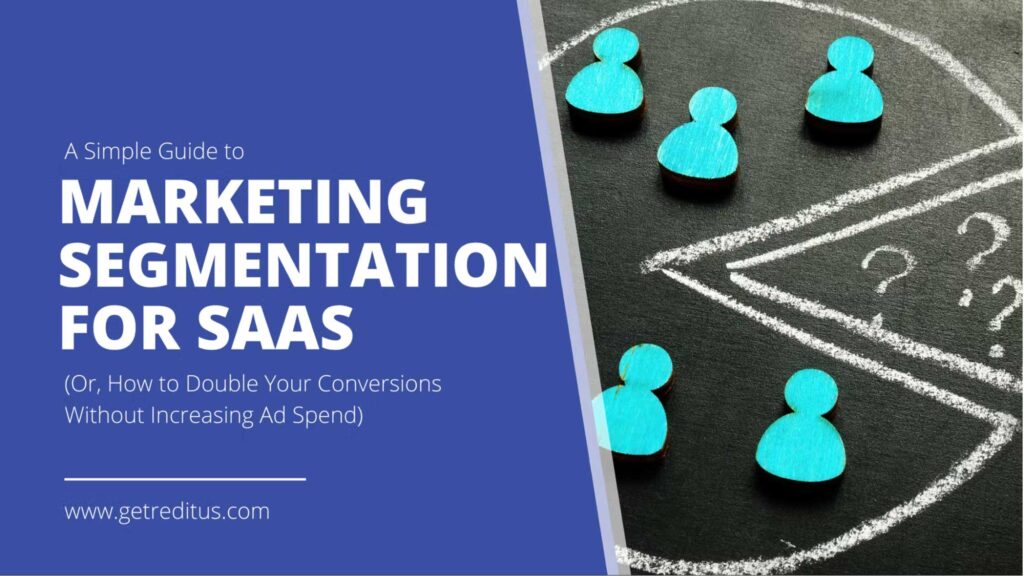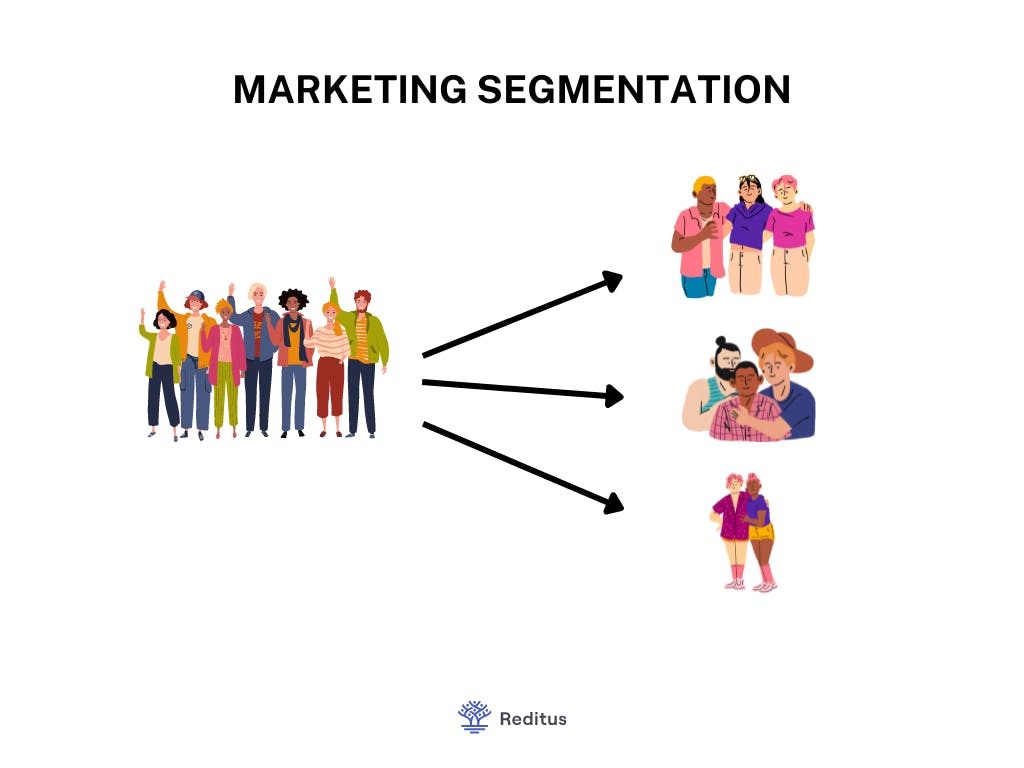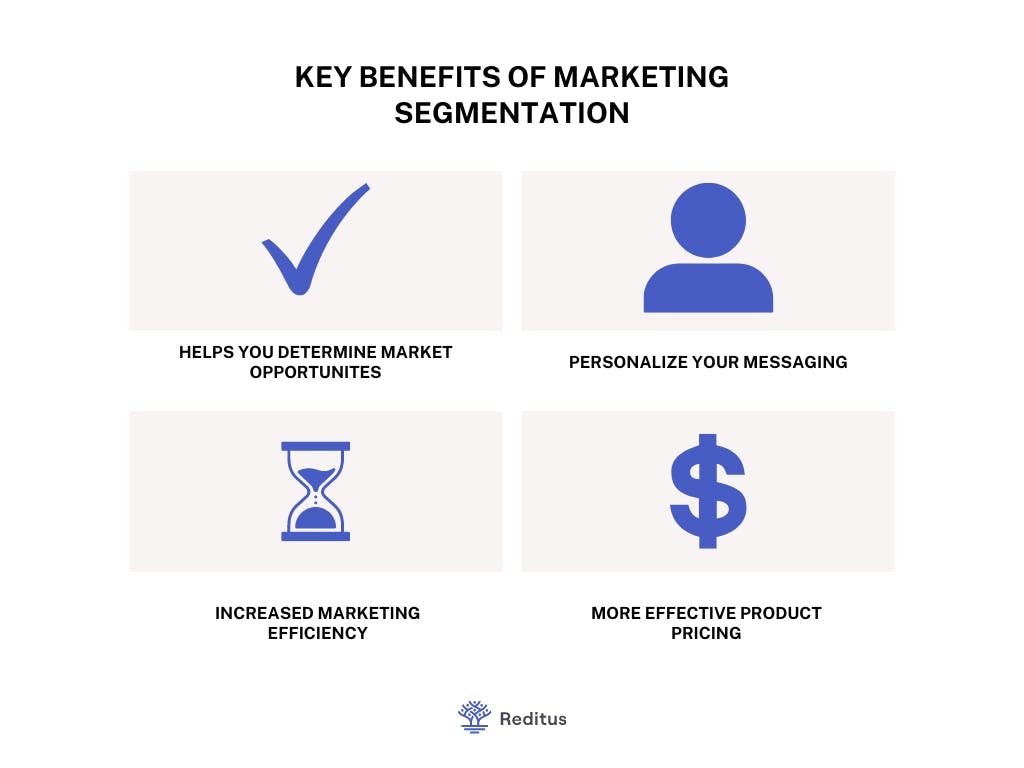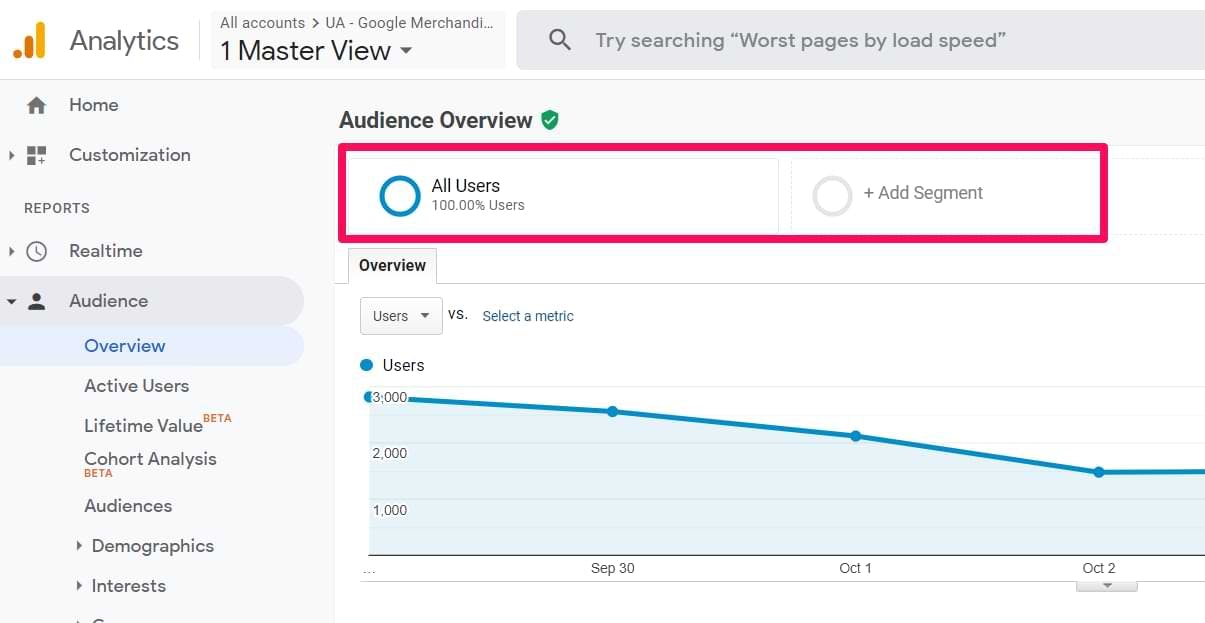How to Double Your Conversions B2B marketing segmentation

Today, we'll discuss B2B marketing segmentation, why it's essential, and how you can increase ROI from your marketing campaigns.
B2B marketers face an uphill battle. Everyone and their mother is launching a new social media platform. Inboxes are overflowing with marketing messages, and consumers are getting wise to traditional advertising tricks.
On top of all this, we now know that even the most sophisticated B2B buyers don't buy brands exclusively; they buy vendors that solve problems.
In other words, it's more important than ever for B2B marketers to segment and identify target audiences — if they want to win the trust of that valuable prospects and drive measurable ROI from their campaigns moving forward.
Table of contents
What, Exactly, Is B2B Marketing Segmentation?
Simply put, market segmentation divides a market into subgroups of people with something in common, such as their needs, wants, or buying behaviors.
Humans naturally segment daily: we group our friends into different categories, drive in lanes based on speed, and buy things from vendors specializing in the products or services we're looking for.

Market segmentation aims to create similar understandings and groupings within a target market, so businesses can better target their advertising, products, and services to the people most likely to need or want them.
As you get to know your audience segment, you'll be able to tailor content for them, communicate more effectively, and, most importantly, tailor your sales process to their needs.
For instance, if you're selling a CRM system, you might segment your market by company size. In this case, you would have three segments: small businesses, medium-sized businesses, and enterprise companies.
Each segment would require a different type of sales process and message.
A small business is typically more agile, making decision-makers easier to reach. So, you would need another kind of sales process than an enterprise company bogged down by red tape and a longer sales cycle.
Understanding these nuances means you can save time and money by targeting your marketing campaigns to the right segment.
We'll cover specific strategies and tactics for marketing segmentation later on, but first, let's answer a crucial question.
Why Should You Segment Your Audience?
In today's competitive landscape, b2b marketing segmentation is no longer an option; it's a responsibility.
Understanding your audience and dividing them into segments can save time and money by targeting your marketing campaigns to the right segment.
With social media marketing now the norm, you're not just marketing to your target audience. You're also selling to their friends, co-workers, and followers.
If you're not paying attention to segmentation and creating highly personalized, engaging content for each audience segment, you could end up annoying and alienating parts of your potential customers.

On the other hand, if you segment your audience, you can create content relevant to their specific needs and pain points, which, in turn, will help you build trust and increase conversions.
Segmentation also allows you to track and measure the ROI of your marketing campaigns.
For example, let's say you have two target audience segments: small businesses and enterprise companies.
You decide to run a social media campaign with no proper targeting. The campaign is flourishing, and you see a bump in web traffic and conversions. But you can't attribute the campaign's success to any one thing.
Now let's say you segment your audience and run two separate social media campaigns, one targeting small businesses and one targeting enterprise companies.
You measure the results of each campaign separately and see that the enterprise campaign had a higher ROI. You can now attribute the success of the enterprise campaign to your targeting and segmentation strategy.
In short, b2b marketing segmentation allows you to be more strategic with your campaigns, track their success, and allocate your resources more efficiently.
B2B Marketing Segmentation Best Practices
There's no one-size-fits-all approach to segmentation. You'll want to consider several factors when segmenting your B2B audience.
Some standard methods of segmentation include:
- Firmographics: This is the most commonly used method of segmentation. Firmographics include factors such as company size, industry, and location.
- Demographics: This method focuses on the personal characteristics of your target audience, such as age, gender, job title, and income.
- Behavioral: This method segments your audience based on their behavior, such as their purchasing habits, web browsing habits, and email engagement.
- Psychographics: This method looks at the psychological factors that influence your target audience's behavior, such as their values, attitudes, and lifestyle.
You can also mix and match these methods to create more narrowly defined segments. For example, you could segment your audience by industry, job title, location, and purchase history.
The important thing is to segment your audience in a way that makes sense for your business and allows you to create targeted content that resonates with each segment.
Once you've decided how to segment your audience, you'll need to determine what type of content to create for each segment.
To do this, you'll want to consider each segment's needs and pain points. What are they struggling with? What type of content would be most helpful to them?
You can also look at your past marketing campaigns and see which performed best with each segment. Doing so will give you a good idea of the type of content that resonates with each audience.
Once you have a better understanding of the needs of each segment, you can start creating targeted content that speaks to their specific pain points.
If you're not sure where to start, here are a few ideas:
- Blog posts: You can segment your blog traffic using Google Analytics and create targeted blog posts for each segment. For example, if you see many small businesses reading your blog, you could create a post specifically for small businesses.
- Whitepapers and e-books are great for segmenting your audience because you can create different versions for each segment. For example, you could create a whitepaper on "The Top 10 Ways to Increase ROI for Small Businesses" and another whitepaper on "The Top 10 Ways to Increase ROI for Enterprise Companies."
- Email campaigns: You can use segmentation to create targeted email campaigns that are more likely to convert. For example, if you have a segment of small businesses that haven't converted, you could send them an email with a special offer.
- Social media: You can use segmentation to create targeted social media campaigns. For example, if you have a segment of enterprise companies interested in your product, you could create a social media campaign specifically for them.
As you can see, there are several ways to use segmentation to create targeted content that resonates with your audience. By segmenting your audience, you can be more strategic with your marketing campaigns, track their success, and allocate your resources more efficiently.
How to Develop an Effective B2B Marketing Segmentation Strategy
Now that you know the benefits of segmentation and how to segment your audience, it's time to develop a segmentation strategy.
Here are a few tips to help you get started:
1. Start at the End
Begin by clearly defining your goals. What do you want to achieve with your segmentation strategy? More leads, better positioning, or reduced costs?
Once you know your goals, you can develop a strategy to help you achieve them.
For instance, if your goal is to improve ROI, you might want to segment your audience by purchase history. This would allow you to create targeted content and offers for each segment.
On the other hand, if your goal is to reduce costs, you might want to segment your audience by location, allowing you to target your campaigns more efficiently and minimize ad spending.
Of course, these are just two examples. There are many different ways to segment your audience, and the best way will depend on your specific goals.
2. Do Your Research
Once you have a general idea of how you want to segment your audience, it's time to do some research.
Start by looking at your customer data. This will give you a good idea of who your customers are and their interests.
You can also look at your website traffic data to see which segments are most interested in your product, helping you focus your segmentation strategy on the right audience.
Google Analytics is an excellent tool for this. You can use it to segment your traffic by several different factors, including location, device, and behavior.

Once you have a good understanding of your audience, you can start developing your segmentation strategy.
3. Don't Overcomplicate Things
One of the biggest mistakes you can make with segmentation is overcomplicating things. There's no need to segment your audience into hundreds of different groups.
Instead, focus on a few key segments that you think will be most beneficial to your business.
It's also essential to avoid segmenting your audience too narrowly.
A good rule of thumb is to segment your audience into no more than five different groups and to make sure each group is large enough to be significant. Otherwise, you risk creating too many small segments that are difficult to target effectively.
4. Focus on Hyper-Responsive Segments
Once you've identified your key segments, it's time to focus on the ones most responsive to your product.
These segments are most likely to convert and generate the best results for your business.
To find your hyper-responsive segments, start by looking at your customer data. Look at factors like purchase history, website behavior, and email engagement.
This will help you identify which segments are most interested in your product and likely to convert.
Once you've identified your hyper-responsive segments, you can start developing targeted content and offers for each.
This content should appeal to each segment's specific needs and interests, helping you increase your conversion rate and ROI.
5. Test, Test, Test
Once you have a segmentation strategy, it's crucial to test it.
Start by creating a few test segments and see how they perform. Try different combinations of factors to see which ones work best for your business.
Once you've found a segmentation strategy that works, implement it across your marketing campaigns.
Monitor your results and make adjustments as needed. Segmentation is a dynamic process, and you should constantly be testing and tweaking your strategy to ensure it's as effective as possible.
6. Measure Your Results
Finally, it's essential to measure the results of your segmentation strategy.
Start by setting up some key performance indicators (KPIs) to track. These might include measures like leads generated, conversion rate, and ROI.
Then, track your KPIs over time to see how your segmentation strategy performs.
If you do not see the desired results, don't be afraid to experiment. Try different segmentation strategies and tactics until you find one that works for your business.
4. B2b Marketing Segmentation Tactics That Work in SaaS
There are some different ways to segment your audience. But not all segments are created equal.
Some segments are more effective than others, so choosing the right components is vital for your business.
Here are four segmentation tactics that work well in SaaS marketing:
1. Segment by Company Size
One of the most common ways to segment your audience is by company size. This is an excellent way to segment your audience because it allows you to target your campaigns effectively.
For example, it wouldn't make sense to target small businesses if you're selling an enterprise-level product. They wouldn't be able to afford your product, and your campaigns would waste time and money.
On the other hand, targeting large enterprises wo. They would have different needs and requirements, and your product wouldn't be a good fit.
By segmenting your audience by company size, you can ensure you're targeting the right people with your campaigns.
2. Segment by Industry
Another effective way to segment your audience is by industry.
This is an excellent way to segment your audience because it allows you to create targeted content and offers.
For example, if you're selling a product used in the construction industry, you would want to create content relevant to that industry.
You would also want to create offers specifically designed for construction companies. This way, you know that the request is relevant to the industry and will interest you if you sell to a small busier target audience.
3. Segment by Location
Location is another crucial factor to consider when segmenting your audience.
This is an excellent way to segment your audience because it allows you to target your campaigns to specific geographical areas.
For example, if you're selling a product only available in the United States, you would want to segment your audience by location. Otherwise, you would waste your time and money on marketing campaigns targeting people in other countries.
4. Segment by Buying Behavior
If you're selling online, you likely have access to much data about your customer's buying behavior. You can use this data to segment your customers into groups with similar shopping habits.
If you're selling a service, you can segment your customers by how they use it. For example, you could segment customers by those who use your service for X vs. those who use it for Y.
More importantly, you can use this segmentation to change your marketing strategy.
For example, if you know that customers who purchase X are more likely to convert, you can target your ads to those who have purchased X in the past.
You can also use this segmentation to create lookalike audiences on social media. Lookalike audiences are groups of people who share similar characteristics to your existing customers.
This is a great way to find new potential customers who are likely to be interested in your product or service.
Ultimately, you can create more targeted and effective advertising campaigns by segmenting your customers based on their shopping behavior. And as a result, you'll be able to increase your ROI without increasing your ad spend.
B2B Marketing Segmentation FAQs
Now that you understand the fundamentals of B2B marketing segmentation, let's answer some of the most common questions:
What are four ways to segment B2B market?
B2B markets can be segmented in various ways, including:
- Based on customer type, such as industry, size, or location
- Based on customer needs, such as product features or price
- Based on customer behaviors, such as buying habits or usage patterns
- Based on customer relationships, such as loyalty or customer lifetime value
What are the challenges of segmentation in B2B marketing?
Some of the main challenges might include:
- Accurately determining customer segments
- Developing an understanding of customer needs and preferences
- Creating a customer profile that is easy to understand and use
- Developing an effective segmentation strategy that can be used to target customers
- Ensuring the segmentation strategy is aligned with the overall business objectives
- Managing the segmentation process to ensure customer data is up to date
- Ensuring customer segmentation is used in all areas of the business, not just marketing
- Developing effective segmentation strategies for different channels (e.g., email, website, etc.)
- Tracking the effectiveness of segmentation strategies over time
- Ensuring segmentation strategies are compliant with data protection laws
How is B2C segmentation different from B2B segmentation?
The primary difference between B2C and B2B segmentation is that B2C segmentation is focused more on the individual customer. In contrast, B2B segmentation is focused more on the business.
B2C segmentation is typically segmented based on demographic factors such as age, gender, and location. It also usually takes into consideration individual customer behaviors and preferences.
B2B segmentation, on the other hand, typically takes into consideration factors such as the size and type of business, the industry they are in, and the business's purchasing power
Closing Notes
Segmenting your B2B marketing audience is the first step to any B2B campaign success. If you don't know whom you're talking to, how will you ever have a hope of engaging them?
That said, the most important thing to remember as you're segmenting is to do it with a focus on action. In other words, when segmenting your audience, ask yourself: "How will this segmentation help me drive results?"
Now that you have a clearer picture of what B2B marketers are up against, you should also have a better idea of why it's so important to segment your B2B audience.
With the right B2B marketing segmentation strategy, you can create more personalized content, drive engagement rates way up, and convert more sales.

